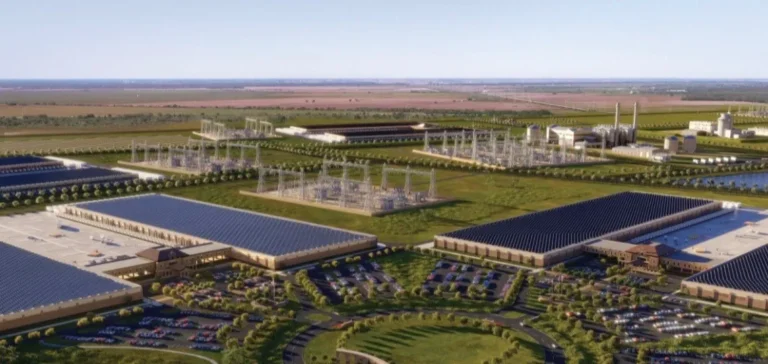Fermi America announced the signing of two letters of intent with Siemens Energy to supply power generation equipment with a combined capacity of 2.0 GW in combined cycle mode by 2026, and to strengthen their collaboration in the nuclear sector. This project is part of the development of an 11 GW private energy campus in Texas designed to power infrastructure related to artificial intelligence and high-performance computing.
1.1 GW of new gas turbines for 2026
The first agreement concerns the planned delivery of three SGT6-5000F F-class gas turbines, designed to operate in combined cycle mode. These industrial machines are capable of providing reliable, continuous power generation, with a total capacity of 1.1 GW under ISO conditions. The total secured or under-negotiation gas turbine capacity for Fermi now stands at 2.0 GW, with delivery scheduled for 2026.
These units are intended to provide a stable energy base to support the rapid growth in electricity demand linked to artificial intelligence. Fermi America targets high-availability, uninterrupted supply in line with strict industrial standards, with accelerated deployment using proven technologies already on the market.
Strengthening the nuclear component with Siemens turbines
The second letter of intent aims to integrate Siemens Energy’s steam turbines, generators, and control systems into Fermi’s nuclear portfolio, which includes the planned deployment of four AP1000 reactors designed by Westinghouse. Siemens Energy has recognised expertise in modernising nuclear turbines, particularly at existing U.S. facilities.
The two partners will work closely to adapt these technologies within Fermi’s installations, with a focus on robust performance and reliability. This nuclear component complements the company’s broader energy diversification strategy, which aims to combine natural gas and nuclear within a centralised energy ecosystem.
Infrastructure dedicated to artificial intelligence
All these developments fall within the scope of the private energy campus launched by Fermi America, with a projected capacity of 11 GW. The infrastructure is specifically designed to meet the growing needs of data centres and artificial intelligence applications by integrating flexible and strategically redundant power sources.
The choice to operate with proprietary equipment independent of the public grid is intended to ensure uninterrupted power supply — a critical criterion for high-dependency digital services. The agreements with Siemens Energy mark a key milestone in the implementation of this autonomous energy model.






















